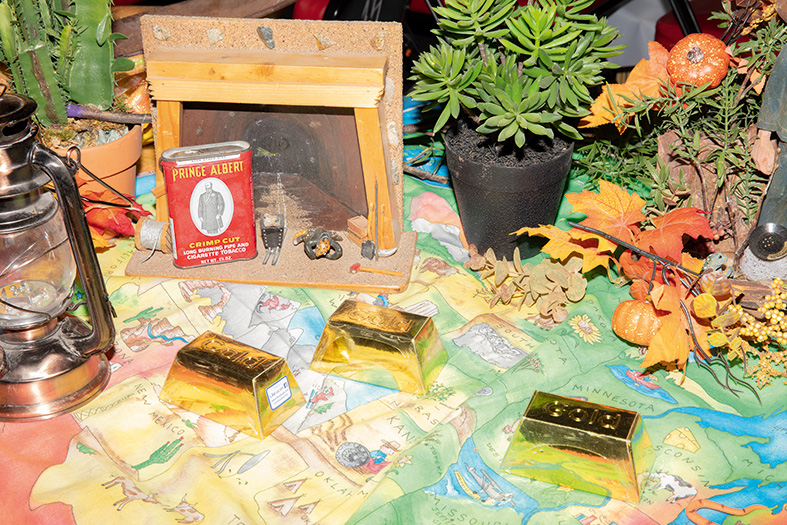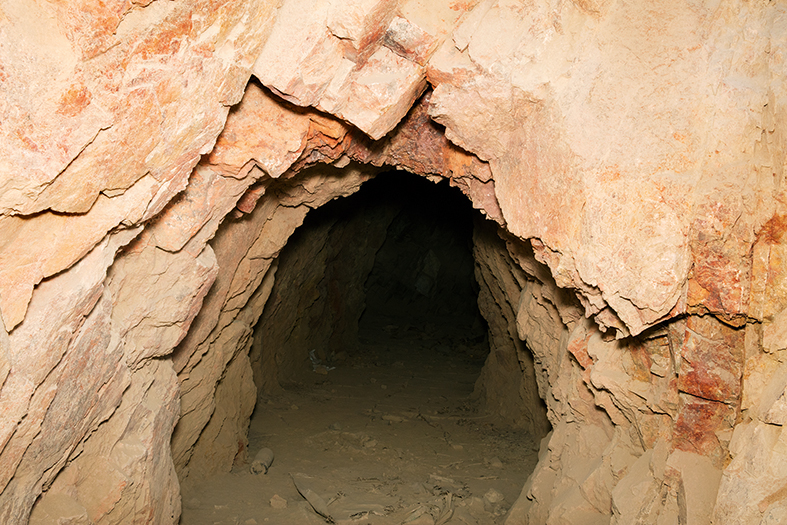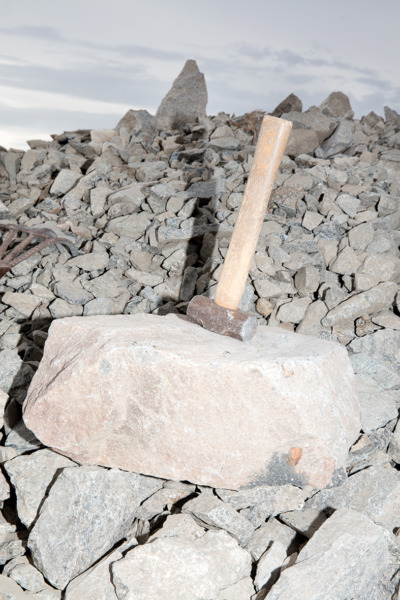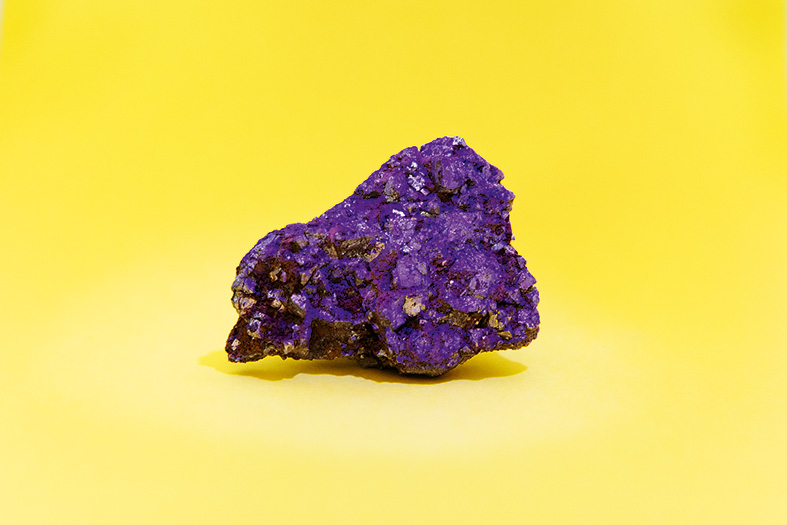Lisa Barnard – The Canary and the Hammer

If all the gold ever mined in human history were gathered together it would make a cube, a little-larger than a tennis court. In the greater scheme of things, gold is rare, and for that reason, as well as for its colour, its purity, even its sheen, and its ability to buy more gold, it has for millennia held sway over people’s imaginations and desires. Lisa Barnard’s The Canary and the Hammer (MACK, 2019) begins with the legends of gold and sets itself the task of finding the ‘traces of truth, entangled within the web of mythology’. The book represents the refined product of a wider project, four years in the making, that began initially in response to the Global Financial Crisis of 2008. Perhaps, Barnard suggests, we could use gold, this ‘potent symbol of value, beauty, purity, greed and political power’, and its extraction and processing, its recycling and re-use, to ground our understanding of our evermore remote and increasingly immaterial economy of finance and services. We could take the image of gold and return it to the earth.
Barnard isn’t the first artist to do so. Sebastião Salgado’s 1986 series Serra Pelada presents, in classical black and white reportage, the eponymous open-pit mine and its fifty thousand mud-soaked workers tormented perpetually by the prospect of gold. In contrast, Barnard’s thematic investigation is wide-ranging and faster-paced. Across seven chapters, enigmatically titled ‘Sweat of the Sun’, ‘Disease of the Heart’, ‘Operation Fish’, she gathers together stories from points scattered in time and place. Photographs, as well as scanned documents, engravings, maps and computer visualisations, support the writing which draws on poems, myths, facts and figures, and technical descriptions of processes. This archival approach reads more like Allan Sekula’s ‘critical realist’ Fish Story (1989-95) which investigated the ‘imaginary and material geographies of the advanced capitalist world’, specifically, global shipping networks. Where Sekula developed a style of writing metaphorically set adrift, Barnard’s bears an affinity with the miners themselves, following seams of information and sieving archives to find the mere trace of gold.

She shows that gold turns up almost anywhere you look, but she begins at the source with photographs of the rust-red, claustrophobia-inducing tunnels at the SOTRAMI mining cooperative in Santa Filomena, Peru. Founded in 1989, the organisation has undoubtedly brought benefits to the workers with securing incomes, safety equipment, and accommodation. Yet amidst this, Barnard finds a strict gendered division of labour. Sexism in Santa Filomena finds its form in folk myths that say when a woman enters the mine it will stop providing gold. Women instead work in ancillary roles, some as craftspeople, some as pallaqueras, who scrabble with welded rebar claws at the discarded rocks to scavenge trace quantities of gold. As with work, so with play. In a stark photographic diptych, Barnard compares the men’s on-site astroturf football pitch to the rough patch of stamped earth reserved for the women. Barnard pictures these women and their crude tools, offering some kind of corrective in the de-emphasis of masculinity and the highlighting of women at every stage of the process.
Historically, gold was used either in jewellery or as a store of value, and there are many cases where the difference between these two forms is imperceptible. Over the past two centuries, this has changed, Barnard pays close attention to the way in which gold is increasingly used as an industrial material. Its resistance to corrosion, its malleability, and its electrical conductivity make it the ideal material for electrical cables, circuit boards, precision mechanisms, and reflective mirrors. Her pictures of these components, as well the satellites and spectrometers they are used in, alluding to the fact that prospecting is less a case of panning for flakes than of the collection of data, maps, and samples to establish intangible legal claims, and exclusive rights. The worry that we have reached ‘peak gold’, the point at which the rate of consumption exceeds that of extraction, has only accelerated the drive to develop technology to mine asteroids.


Perhaps more important, though less enticing, are the recent earthbound developments in the specialised industry of recovering gold from electronic waste – computers, phones, batteries and car parts – practised in some of the most deprived areas of the world. The quantity of gold in each device is minuscule, and so begins a grimly calculated economy of scale and efficiency where tonnes of waste must be destroyed at minimal cost for a marginal profit. Barnard notes that in 2015, while China was the largest producer of electronic waste, it simultaneously imported the entire annual stock of US waste to feed this industry. She pictures an illicit processing site in Hong Kong, where boxes of handsets are piled up, smuggled across the border in mislabelled packages. The precious metals are extracted in an almost alchemical mixture of acids and fire that release vast quantities of noxious chemicals into the air and the froth-corrupted lungs of the poor. Fortunately for its investors, the growth of this unconventional recycling system seems unstoppable.
Writing on his study into the flows of capital, Allan Sekula summarised his investigation in the terms, “How does the sea ‘disappear’ from the cognitive and imaginative horizon of late modernity?” It strikes me that The Canary and the Hammer occupies the same field of inquiry, but that Barnard is forced to invert the question as gold hasn’t disappeared from our ‘cognitive and imaginative horizon’, rather it has remained obstinately present. It is its ubiquity and its enduring role as a sign of wealth that she confronts. How to picture gold without falling back on clichés or generating material for further myths and conspiracies? In an interview with the Financial Times discussing the project, Barnard suggests she could have photographed the extraction process in a single mine from beginning to end, in other words, she could have undertaken the kind of classical photojournalist reportage as did Sagaldo. However, she believes that visual eclecticism provides a more accurate depiction of our world.


I see this visual eclecticism playing several roles. It works against cliched imagery; there are few pictures of finished golden products; instead, Barnard shoots the workers’ tools, their possessions, and the landscapes they inhabit. Her subjects and her stark, brightly lit scenes undermine the presumed luxury and refinement of gold. It also has the effect of drawing together seemingly unrelated things that appear to exist outside the production of gold, even outside capitalism itself, and demonstrating how their entanglement perpetuates exploitation. By adopting the guise of various photographic aesthetics, commercial, product, social documentary and vernacular snapshots, Barnard’s investigation can be imagined beyond the studies within the book. Were her investigation confined to a single site, it might be easier to dismiss as an aberration, in presenting numerous specific instances and she speaks more generally. I now find it hard to look at a catalogue without becoming occupied by the question of how much gold its products embody.
I find there are times this generality reads as hesitancy. Barnard offers no explicit critique or direct solutions. Her analysis is dispassionate rather than polemic. She details the good amongst the bad, though the latter seems to outweigh the former. She finds gold being used in the same medical equipment that pollutes landfills; that the California waterfront is built on the abandoned cargo barges of successive gold rushes; that there are familial lineages, territories and laws that exist today as a direct result of centuries of gold mining. While gold may be a noble metal, it is steeped in blood, sweat, and tears. What goes unsaid, only to be inferred, is the fact that there is no possibility of establishing an ethical relationship to gold. The value of Barnard’s work is in using gold to show our problems are not solely due to gold, and that our obsession with gold can cloud our vision; its prevalence masks the interdependence of all people. Sexism, racism, greed can find forms in gold, but must also be understood without it.
The Canary and the Hammer, Lisa Barnard, published by MACK, 2019
